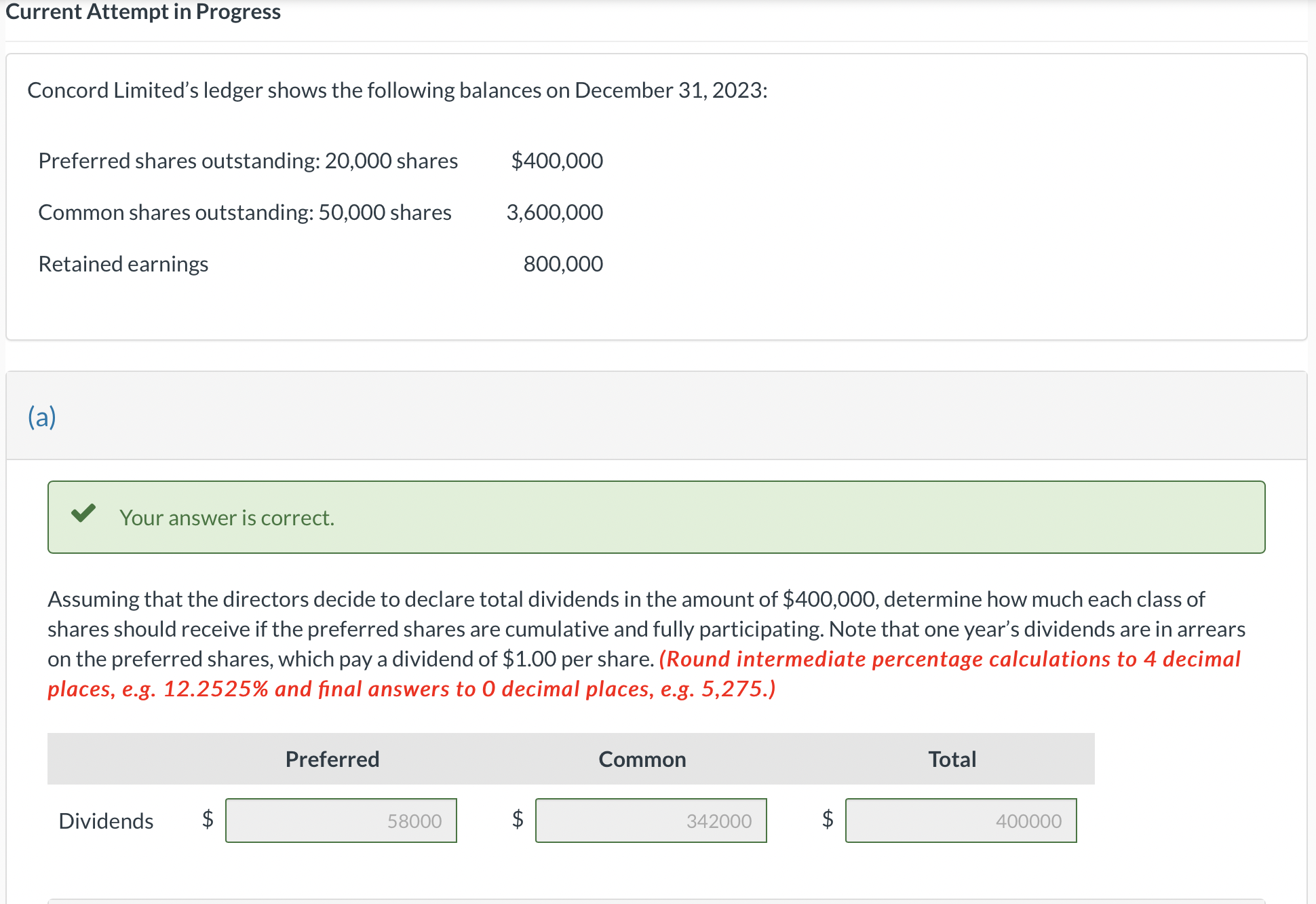b
Your answer is correct.
Assuming that the directors decide to declare total dividends in the amount of $ determine how much each class of
shares should receive if the preferred shares are noncumulative and nonparticipating. Note that one year's dividends are in
arrears on the preferred shares, which pay a dividend of $ per share. Round answers to decimal places, eg
Attempts: of used
c
Your answer is partially correct.
Assuming that the directors decide to declare total dividends in the amount of $ determine how much each class of
shares should receive if the preferred shares are noncumulative and are participating in distributions in excess of a dividend Assuming that the directors decide to declare total dividends in the amount of $ determine how much each class of
shares should receive if the preferred shares are noncumulative and are participating in distributions in excess of a dividend
rate on the common shares. Note that one year's dividends are in arrears on the preferred shares, which pay a dividend of $
per share. Round intermediate percentage calculations to decimal places, eg and final answers to
decimal places, egCurrent Attempt in Progress
Concord Limited's ledger shows the following balances on December :
Preferred shares outstanding: shares
$
Common shares outstanding: shares
Retained earnings
a
Your answer is correct.
Assuming that the directors decide to declare total dividends in the amount of $ determine how much each class of
shares should receive if the preferred shares are cumulative and fully participating. Note that one year's dividends are in arrears
on the preferred shares, which pay a dividend of $ per share. Round intermediate percentage calculations to decimal
places, eg and final answers to decimal places, eg
PLEASE ANSWER PART C

